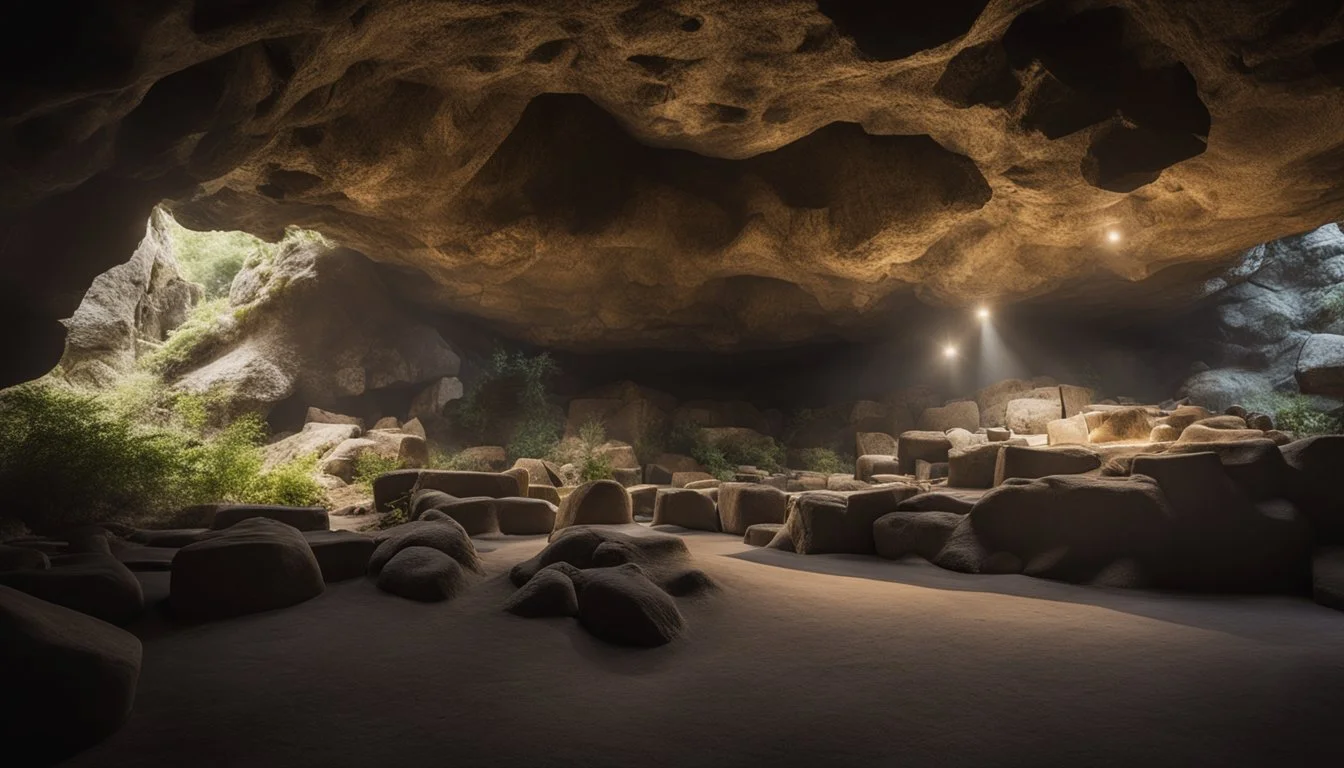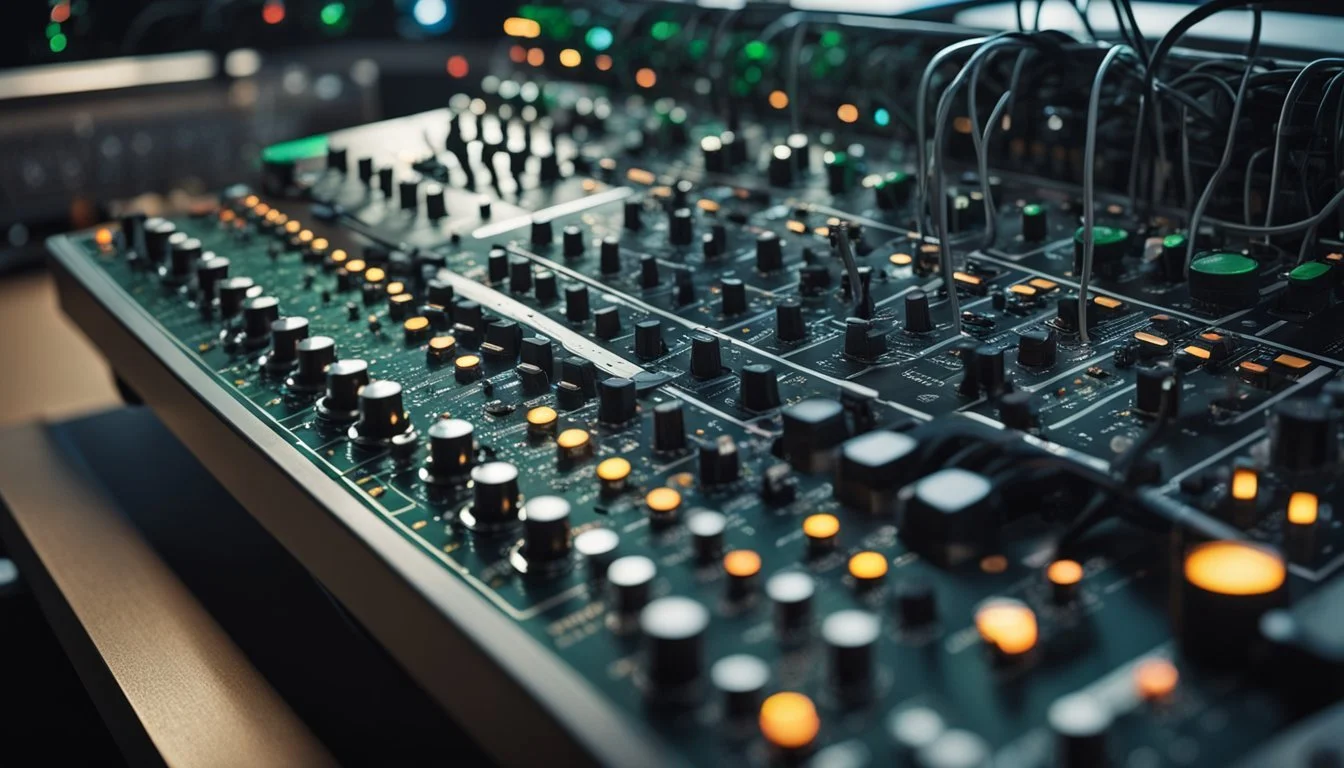6 Unconventional Ways to Create Immersive Sound Design for Your Films
Innovative Techniques for Filmmakers
Creating immersive sound design for films can significantly enhance the audience's viewing experience by adding depth and realism to the visual storytelling. Traditional methods often involve well-known techniques and tools, but exploring unconventional methods can lead to more unique and memorable soundscapes. Finding new ways to manipulate and create sounds can set your film apart, making it a richer and more engaging experience for viewers.
Understanding the power of sound is essential as it plays a critical role in evoking emotions, building tension, and highlighting key moments in the narrative. Whether you're working on a high-budget production or an indie film, innovative sound design techniques can provide an edge that amplifies the impact of your work.
1) Using Contact Microphones for Unique Ambient Sounds
Contact microphones, also known as piezo microphones, are excellent tools for capturing unique ambient sounds. Unlike traditional microphones, they attach directly to surfaces and pick up vibrations from solid objects. This allows sound designers to capture resonant frequencies and textures that are typically inaudible.
By attaching a contact mic to various objects, one can record the subtle sounds of everyday items. For instance, placing a contact mic on a window can capture the vibrations caused by wind or distant traffic. This method provides a rich, textured soundscape that adds depth to film audio.
Different materials and surfaces offer diverse sound characteristics. Contact mics can be used on metals, wood, glass, and even plant leaves to discover a wide range of natural and mechanical sounds. This versatility makes them particularly useful for creating immersive and unconventional ambient noise.
In addition to capturing ambient sounds, contact microphones can isolate specific vibrations. This can be useful in a noisy environment where traditional microphones would pick up unwanted background noise. By focusing solely on the object's vibrations, cleaner and more isolated recordings are achieved.
The affordability and accessibility of contact microphones add to their appeal. Inexpensive models are readily available, making this unique sound-capturing technique accessible to filmmakers on a budget. Contact mics provide a straightforward yet innovative way to enrich the auditory experience of any film.
2) Layering Foley Sounds with Synth Textures
Combining Foley sounds with synth textures creates an engaging auditory experience for film audiences. Foley sounds bring organic, real-world elements to the mix, while synth textures introduce a layer of depth and atmosphere.
Start by selecting Foley sounds that match the scene's actions and environment. For instance, footsteps, rustling leaves, or door creaks can set a realistic foundation.
Next, choose synth textures that complement these Foley sounds. Opt for ambient pads, subtle drones, or rhythmic electronic pulses. These synth elements should enhance the scene without overpowering the Foley sounds.
Align the synth textures with the timing and placement of Foley sounds. This synchronization creates a cohesive soundscape that immerses the audience in the film's environment.
Panning is an effective technique to widen the stereo field. Position some Foley sounds slightly to the left and synth textures to the right. This separation adds spatial dimension and richness to the audio.
Incorporate subtle EQ adjustments to ensure both Foley and synth elements occupy distinct frequencies. This prevents audio clutter and ensures clarity and balance in the mix.
Experiment with reverb and delay to create a sense of space. Applying these effects to both Foley and synth textures can simulate various environments, from open landscapes to confined interiors.
3) Experimenting with Binaural Recording Techniques
Binaural recording uses two microphones to create a 3D stereo sound. This setup mimics the natural listening experience of human ears.
When placed correctly, these microphones capture sound from different directions, providing a sense of depth and space. Filmmakers can use this technique to immerse viewers more deeply in a scene.
This method is especially effective when listened to through headphones. The brain interprets the spatial cues, making it feel like sounds come from specific locations.
Virtual reality and gaming industries have popularized binaural audio. In films, it can enhance scenes by making environmental sounds more realistic and engaging.
By experimenting with microphone placement, filmmakers can simulate various acoustic environments. This flexibility allows for a range of creative soundscapes in different settings.
Applying binaural recording in horror films, for example, can heighten the sense of presence. This technique can make eerie sounds feel like they're coming from just behind the viewer.
4) Incorporating Natural Reverberations from Caves
Caves offer a unique and immersive soundscape for filmmakers looking to enhance their audio. The natural reverb found within these environments can add a layer of depth and authenticity to scenes.
Cave reverberations typically emphasize low to mid frequencies, creating a warm and rich sound. The energy often peaks between 100 and 200Hz before rolling off steeply at 300Hz to 8kHz.
To capture this sound, record a sound source in a cave and use high-quality microphones to gather the reverberation. Alternatively, use convolution reverb technology by recording the cave's impulse response and applying it to your audio.
Incorporating cave reverb can significantly improve the atmosphere of scenes, making them feel more natural and immersive. This technique is particularly effective for scenes set in enclosed or underground spaces.
Using these natural reverberations, filmmakers can create more realistic and engaging soundscapes, enhancing the viewer's experience.
5) Utilizing Modular Synthesis for Atmospheric Effects
Modular synthesis offers filmmakers a unique tool for creating immersive atmospheric effects. By combining various modules, users can generate rich, evolving soundscapes.
Oscillators, filters, and LFOs can be configured in countless ways, allowing for dynamic sound creation. These components enable filmmakers to craft everything from subtle background ambience to intense, otherworldly atmospheres.
Control Voltage (CV) signals are particularly useful for modulating parameters and adding motion to the sound. This can create an ever-changing sonic environment that adds depth to the visual elements of a film.
By experimenting with different patching techniques, filmmakers can achieve a wide range of effects. For instance, using multiple filters and effects can transform a simple sound into a complex, evolving texture.
Integrating a modular synth with other digital tools offers even more possibilities. Connecting to a Digital Audio Workstation (DAW) can enhance the ability to edit and layer sounds, resulting in a polished final product.
Embracing the flexibility and hands-on nature of modular synthesis can lead to unique auditory experiences that elevate the cinematic experience. Experimentation and creativity are key to unlocking the full potential of this technology in sound design.
6) Manipulating Field Recordings for Enhanced Realism
Field recordings, when manipulated effectively, can significantly enhance the realism in films. Sound designers often start by capturing authentic environmental sounds. These recordings serve as a foundation to create a more immersive auditory experience for the audience.
One approach is layering multiple recordings. Combining different ambient sounds can simulate a more complex environment. For example, layering sounds of rustling leaves, distant traffic, and footsteps can create a bustling park atmosphere.
Another technique involves modifying the frequency and amplitude of the recordings. By using tools like equalizers and compressors, sound designers can emphasize certain elements within a field recording. This can draw the listener's attention to specific sounds that complement the visual scenes.
Field recordings can also be processed to match the acoustics of the filming location. Reverb and echo effects can be added to mimic the sound characteristics of the environment, such as a large hall or a narrow alleyway. This aligns the audio more closely with the visuals.
Finally, creative manipulation is key. Time-stretching, pitch-shifting, and other digital audio effects allow designers to transform ordinary sounds into unique auditory experiences. This can make a scene more engaging and believable, enhancing the viewer's connection to the story.
Understanding the Basics of Immersive Sound Design
Immersive sound design plays a pivotal role in creating a compelling film experience. It involves the careful manipulation of sound elements to envelop the audience, enhancing the narrative and emotional impact of the film.
What is Immersive Sound?
Immersive sound is an audio experience that surrounds the listener, making them feel as if they are part of the environment. Unlike traditional stereo sound, which typically plays from two channels, immersive sound leverages multiple channels including surround sound and 3D audio technologies like Dolby Atmos and binaural recording.
This approach allows sound to move dynamically around the listener. For example, footsteps might be heard approaching from behind, creating a sense of realism.
Various techniques like spatial audio and ambisonics help achieve this. They focus on capturing sounds from all directions, contributing to a more realistic and engrossing auditory experience.
Key Principles of Sound Design
The foundational principles of sound design are crucial for achieving immersive sound. These include frequency, amplitude, and timbre.
Frequency: This determines the pitch of a sound. Lower frequencies provide deeper, bass-heavy sounds, while higher frequencies add brightness and clarity.
Amplitude: This relates to the loudness of the sound, measured in decibels (dB). Control of amplitude helps in setting the emotional tone of a scene.
Timbre: This defines the color or quality of a sound, distinguishing different sounds even if they share the same pitch and loudness.
Advanced elements such as oscillators, filters, and envelopes also contribute to shaping sound. Oscillators generate the sound waveforms, filters modify the tone by enhancing or reducing certain frequency ranges, and envelopes control the dynamics of the sound over time.
Sound layering and use of non-diegetic sounds (sounds not originating from the film's world) are also essential. They can enhance narrative depth and evoke additional emotion, drawing the audience deeper into the story.
Advanced Techniques for Soundscape Creation
Crafting immersive soundscapes requires combining multiple layers of sound and applying sound effects in innovative ways. These techniques enhance the auditory depth and engagement of your film's audio environment.
Layering Sounds for Depth
Layering involves stacking different audio elements to build a rich, textured soundscape. By combining ambient noises, musical cues, and dialogue, sound designers can create an environment that feels alive and immersive.
For example, ambient sound like birds chirping or distant traffic can set the scene and give context to the visuals. Overlaying musical elements subtly can drive emotions without overpowering the other sounds.
Matching sound frequencies ensures a cohesive mix. Low-frequency rumbles can add weight, while high-frequency hisses can introduce a sense of space. An effective soundscape balances all layers without one overpowering the other.
Utilizing Sound Effects Creatively
Using sound effects creatively can transform a scene from ordinary to extraordinary. Foley sounds, for instance, are manually created sound effects that mimic real-life sounds, contributing significantly to the realism of a scene.
Reverb and delay effects can simulate various environments, from small, enclosed rooms to vast, open spaces. Applying these effects can make a character’s footsteps echo in a cave or their voice reverberate in a cathedral.
Pitch shifting can alter a sound’s character. Lowering the pitch of a normal sound can make it menacing, while raising the pitch can make it whimsical. Creative use of pitch results in a more dynamic auditory experience.



